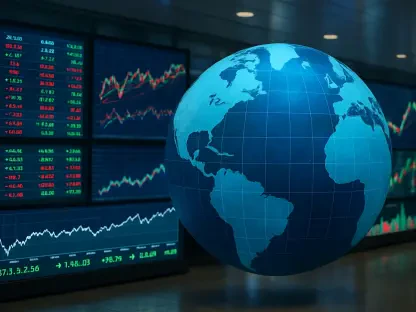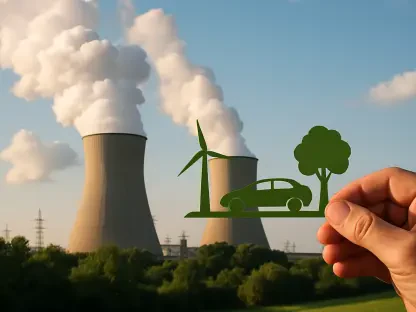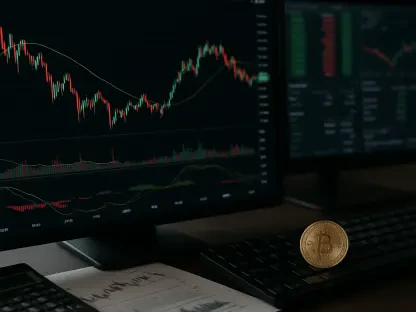The anticipated growth of the Electric Vehicle (EV) Battery Market from 2024 to 2035 illustrates a compelling future powered by significant advancements in solid-state battery technology and enhanced global policies. This burgeoning sector is projected to reach an eye-popping USD 251.33 billion by 2035, driven by a robust Compound Annual Growth Rate (CAGR) of 9.6%. The key drivers for this remarkable growth include the increasing adoption of electric vehicles, rapid advancements in battery technologies, and supportive government policies worldwide.
Innovations in Battery Technology
Solid-State Batteries Revolutionizing the Sector
Solid-state batteries are ardently poised to revolutionize the EV battery market, promising unprecedented improvements in energy density, charging efficiency, and safety. Unlike their traditional lithium-ion counterparts that utilize liquid electrolytes, solid-state batteries employ solid electrolytes. This significant difference grants them greater thermal stability and mitigates the risks of fire, thus offering longer lifespans and reliability.
The remarkable potential of solid-state batteries lies in their ability to enhance the range and efficiency of EVs dramatically. For instance, solid-state batteries are projected to increase the range of electric vehicles to new heights, addressing the persistent challenge of range anxiety among consumers. Faster charging times, combined with improved energy storage capacity, will further accelerate the adoption of EVs. These batteries could become the cornerstone of next-generation electric mobility, setting a new standard for performance and safety.
Industry Developments and Announcements
Industry players have recognized solid-state batteries’ transformative potential, sparking several pivotal developments and announcements in the field. Honda’s announcement in December 2024 marks a significant milestone, with the company developing solid-state batteries designed to deliver up to 620 miles on a single charge. This development highlights the tremendous progress being made in extending the range of electric vehicles, thereby enhancing their practicality and appeal to a broader audience.
Collaborative efforts are proving essential in the advancement of battery technology. Notably, the partnership between Factorial and Mercedes-Benz to develop the Solstice battery exemplifies the synergies driving these innovations. The Solstice battery features a dry cathode design that promises energy densities up to 450Wh/kg. This advancement is particularly critical as it tackles both range anxiety and safety concerns, propelling the EV industry toward a more sustainable and efficient future. These industry collaborations underscore the collective endeavor to usher in a new era of electric mobility.
Passenger Car Segment Dominance
Consumer Demand and Government Incentives
The passenger car segment’s dominance in the EV battery market is driven by an uptick in consumer demand and reinforced by supportive government regulations aimed at curbing carbon emissions. Governments around the world are implementing stringent emission regulations and offering incentives to promote the adoption of electric passenger cars. These measures are pivotal in reducing the automotive sector’s carbon footprint, thereby aligning with global sustainability goals.
Consumer demand for electric vehicles is on the rise, fueled by growing environmental awareness and the appeal of lower operating costs compared to traditional gasoline vehicles. The influx of subsidies and incentives significantly lowers the initial purchase barrier, making EVs a more attractive option for consumers. Moreover, as EV technologies continue to improve, consumers are increasingly opting for electric passenger cars, further bolstering this segment’s growth.
Technological and Market Advancements
Technological advancements in battery chemistry and energy density are significantly propelling the EV market. Major automotive manufacturers are gearing up for the release of new electric models that showcase these advancements. For instance, Renault’s forthcoming Renault 5 E-Tech in 2026 promises to bring advanced lithium-ion batteries from AESC to the fore. Similarly, Mercedes-Benz is set to launch the EQA 300 4MATIC in 2025, equipped with high-performance NMC batteries provided by SK ON.
These upcoming launches underscore the industry-wide commitment to developing higher-performance batteries through strategic collaborations between Original Equipment Manufacturers (OEMs) and battery producers. Such partnerships are essential in driving the technological envelope forward, ensuring that EVs become more efficient, reliable, and accessible to a larger consumer base. The continuous evolution of battery technology will play a critical role in maintaining the upward trajectory of the EV passenger car segment.
European Market Significance
Legislative Push and Emission Targets
Europe stands out as a particularly crucial region for the growth of the EV battery market, fueled by the EU’s stringent emission reduction targets and burgeoning demand for electric vehicles. The legislative framework mandates zero carbon dioxide emissions for all new cars sold by 2035, coupled with a 55% reduction in emissions by 2030 compared to 2021 levels. These ambitious targets are accelerating the decarbonization of new car fleets and driving the adoption of EVs.
The European Union’s forward-thinking policies are pivotal in supporting the transformation of the automotive industry. By setting rigorous emission standards and promoting the use of cleaner technologies, the EU is creating a conducive environment for the growth of the EV battery market. This legislative push not only supports environmental sustainability but also enhances Europe’s competitive edge in the global automotive sector.
Investments in Battery Infrastructure
European automotive and battery manufacturers are making significant investments in EV and battery technologies to meet the growing demand and comply with legislative mandates. Joint ventures such as Stellantis NV and CATL’s project to build a lithium iron phosphate battery plant in Zaragoza, Spain, exemplify the region’s commitment to advancing battery infrastructure. Additionally, the BMW Group’s plans to establish five battery factories near auto manufacturing centers highlight Europe’s strategic approach to scaling up battery production.
These investments are critical in ensuring that Europe remains at the forefront of the global EV battery industry. By expanding battery production capabilities and fostering innovation, Europe aims to solidify its position as a leader in the transition to electric mobility. The establishment of battery gigafactories is a testament to the region’s dedication to supporting the EV market and achieving its ambitious emission reduction goals.
Strategic Partnerships and Investments
Collaborative Efforts
Strategic partnerships between automotive companies and battery manufacturers are playing a vital role in accelerating the development of advanced battery technologies. These collaborative efforts are crucial in addressing the growing demand for high-performance EV batteries and ensuring the industry’s continued growth. By pooling resources and expertise, companies can achieve technological breakthroughs that might be difficult to attain individually.
Collaborations such as the one between Factorial and Mercedes-Benz highlight the importance of synergy in innovation. These partnerships not only drive technological advancements but also foster a competitive landscape that benefits consumers. The combined efforts of automotive and battery manufacturers are paving the way for the next generation of electric vehicles, characterized by enhanced performance, safety, and efficiency.
Establishing Gigafactories
The anticipated expansion of the Electric Vehicle (EV) Battery Market between 2024 and 2035 paints a promising picture driven by major advancements in solid-state battery technology and reinforced global policies. This rapidly growing sector is expected to hit a staggering USD 251.33 billion by 2035, fueled by an impressive Compound Annual Growth Rate (CAGR) of 9.6%. Several key factors are driving this significant growth, including the rising acceptance of electric vehicles, swift progress in battery technologies, and broad government support worldwide. Additionally, increasing environmental concerns and a collective push toward sustainable energy play crucial roles. As countries implement stricter emissions regulations, the automotive industry is compelled to innovate, leading to breakthroughs in battery life, charging speed, and overall efficiency. The collaboration between governments and private sectors to foster research and development further accelerates this progress, positioning the EV Battery Market as a central player in the move towards a greener future.









